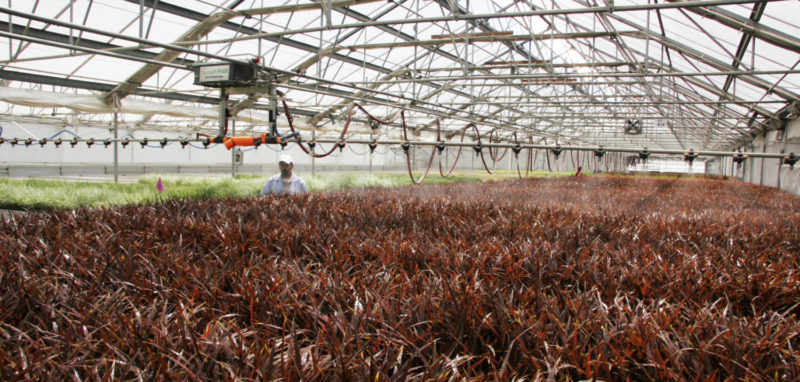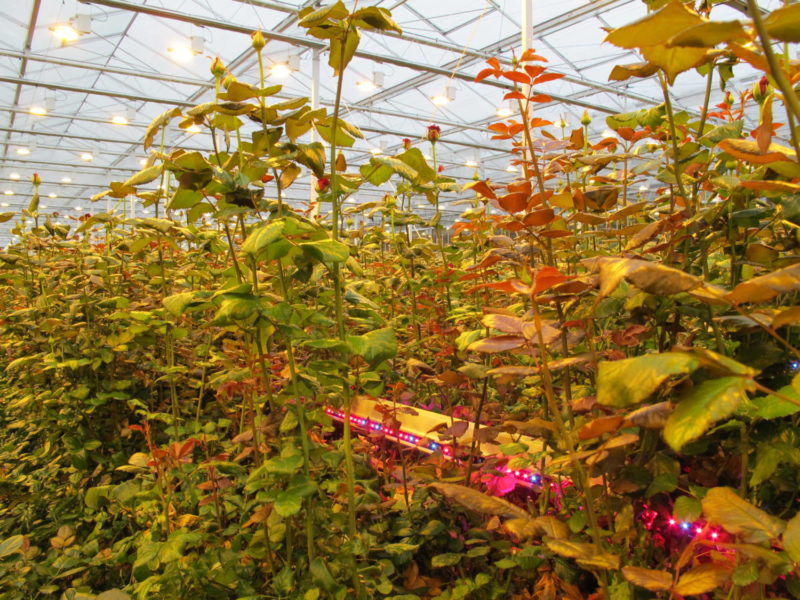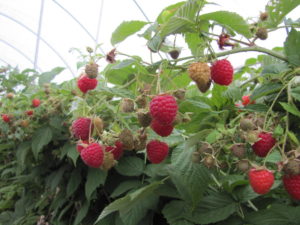
Choosing the Right Environmental Control System
Regardless of the crop you are growing, providing the proper environmental conditions are critical to ensuring plants reach their optimal potential.
“The first thing growers need to consider when determining what type of environmental control system to install is the crops they are growing,” says Murat Kacira, director of the Controlled Environment Agriculture Center at the University of Arizona. “Whether growing vegetables, ornamentals or a medicinal crop, growers need to consider what they are producing. Growers need to be aware of the crops’ requirements or expectations in terms of the environment needed so they can achieve the optimum growing potential of their crops.

“The crop will determine the temperature, humidity, light levels (intensity and spectrum) and carbon dioxide enrichment. The crop also impacts related processes including the water source and availability. Knowing the plants’ water needs and how that water is going to be delivered also impacts the environment. Growers can use a variety of water delivery methods to irrigate their plants which transpire and contribute to the humidity in the greenhouse. This requires an additional consideration for managing the environment in terms of humidity.”
CROP EXPECTATIONS
The yield and quality expectations of buyers and/or consumers need to be considered when selecting crop production technology along with a suitable environmental control system.
“If the end consumer is looking for a high-quality, high-yield product, growers need to match and integrate production system technology with the environmental control system,” Kacira says. “This will enable growers to maintain the environment demanded by their crops for optimal production along with efficient use of resources. For food crops, growers are looking for certain yields, but also have to consider flavor, texture and appearance. This also applies to ornamentals and medicinal crops. Growers can control the quality characteristics by controlling the environment. How tightly the environment is controlled and the flexibility that growers have with that control really depends on the final objectives.
“If there is flexibility in delivering the quality and yield expectations, then growers also have some flexibility in the controls and control systems that need to be incorporated in their production facilities. Some growers will be able to incorporate low-tech environmental control suited for the production system selected with less precision control as long as buyers and/or consumers are satisfied with the product quality.”
THE IMPACT OF LOCATION
The environmental control strategy and systems used are going to be different to meet crop requirements for the environment and operations depending on location.
“The Southeast states including Florida, Georgia and the Carolinas have hot and humid climates,” explains Kacira.
“In the Southwest states, including Arizona and Nevada, the temperature is hot and the air is dry during the summer and cool and dry during the winter. In Arizona, growers are able to cool their greenhouses effectively with evaporative cooling systems, including fan-and-pad systems, except during monsoon season. These types of systems may not be able to function as effectively in more humid locations like Florida because the capacity to cool the air and to lower the humidity is more difficult during hot, humid weather.
“Growers may need to look at alternative cooling systems, including natural ventilation with high volume and tall greenhouses with vent openings. Growers can install some type of shade covering and screening material that help to reflect the portion of the solar light spectrum that causes heat buildup in the greenhouse. They can also incorporate a control strategy that meets environmental control expectations.”
PLANTS — THE GREAT INTEGRATORS
Kacira says every plant has optimal temperatures that are needed for physiological activity and metabolic activity leading towards optimal yields and quality.

“Even though there are optimum temperatures, growers need to remember that plants are great integrators of their environment, meaning that plants can respond to the maximums and the minimums for a short period of time,” he says. “At the end of the day plants respond to the accumulated conditions during a given time period such as a day or several days.
“There are sophisticated environmental control strategies that consider this time or temperature integration. These controls can aim for an average temperature over a period of several days or weeks rather than precisely trying to maintain a set point temperature for a very short time. These types of advanced control applications are used towards energy and resource savings. A control system’s capabilities should be considered when selecting the greenhouse hardware/technology and the control strategy.”
BALANCING CONTROLLABILITY AND AUTOMATION
Kacira says there needs to be a balance in terms of the amount of controllability and automation that growers want and are willing to pay for.
Growers need to consider a cost-benefit analysis. “Growers can have less sophistication, but in that case growers need to do some of the analysis, monitoring and control. They can look at collected data, interpret it, make sense of the data being collected and then determine if they need to adjust the environmental settings,” says Kacira.
“There is a semi-automation mode which is going to be less costly, but growers then need to do their own analysis and then adjust the settings accordingly. More sophisticated control systems can collect, interpret and analyze the data and make the necessary adjustments. There are more capital expenses associated with these more sophisticated systems. Also, for growers who are producing year round, the climate is fluctuating over the course of the year so the greenhouse control system should be able to adjust. The control system should be able to control under changing climates and assure the environment demanded by the crop and production outcomes.”
Kacira says the greenhouse technology should match up with the environmental control system that is being integrated.
“A grower isn’t going to want to install a low-cost or low-tech environmental control system with a high-tech production system and vice versa,” he says. “The systems have to be balanced and have to match their capabilities.
“A grower doesn’t want to install an environmental control system that is limited to only a few control modes when the structure and production system are more technically advanced to do much more. The controller should be able to deliver what the greenhouse is expecting for environmental control. At the same time a grower doesn’t want to incorporate a more sophisticated environmental control computer with a low-tech greenhouse which would be overkill. There has to be a balance in regards to the environmental controller and the equipment installed to control the environment in a cost effective and technical way.”
KNOW YOUR SYSTEMS’ CAPABILITIES
A user’s capability to operate an environmental control system needs to be considered when choosing a system.
“The user has to be able to realize the optimal or the dimensional capacity of the controller in order to be able to control the environment,” Kacira says. “The user needs to be properly trained on how to utilize the system. This includes the service and support that is provided after the installation of the control system so growers can maximize the use of the technology they have selected.

“It’s like any other piece of sophisticated equipment such as the options on a car, phone, personal computer or camera. A grower doesn’t want to be using only 5% of the capabilities of the environmental control system. Growers need to be made aware of the capabilities that both the control system and the crop production system have, otherwise they’re wasting the money spent on the systems. Growers also have to know which options are available and how they can use them in their operations. And just like any consumer, growers need to do their homework in regards to the systems available and which is best suited for their production facilities to achieve the production quantity, quality and resource savings they’re expecting.”
Knowing the capabilities of the greenhouse structure and environmental control system could also influence future facility expansion.
“When designing and selecting the control system and the greenhouse structure, considering expansion would be advantageous in terms of minimizing initial and future costs that can be expected,” Kacira says. “The expansion could be several times more expensive if it is not considered when the original facility is constructed. A high-tech greenhouse system, in many cases, is going to be a structure that is taller with a higher volume and more integrated systems. There is more capacity, more buffer for flexible environmental controls and to be able to remove or integrate different equipment and system components in that space. This type of facility also makes the switch to other crops much easier.”
The same flexibility and ability to make changes that are considered when selecting a growing structure should apply to choosing an environmental control system.
If a grower is building a high-tech greenhouse, Kacira says they should consider installing more high-tech and more capable control systems. “These environmental control systems are designed in such a way that they are plug-and-play types of systems. These are monitoring control systems so as a grower keeps adding more zones to the greenhouse the control system can be expanded with more controllers, input/output modules, relays and actuators as needed. Considering expansion, growers should look at a control system that is adjustable, expandable and scalable in a cost effective fashion.”
For more information: Contact Murat Kacira, University of Arizona, Biosystems Engineering Department; mkacira@email.arizona.edu; ceac.arizona.edu.


 Video Library
Video Library 




















